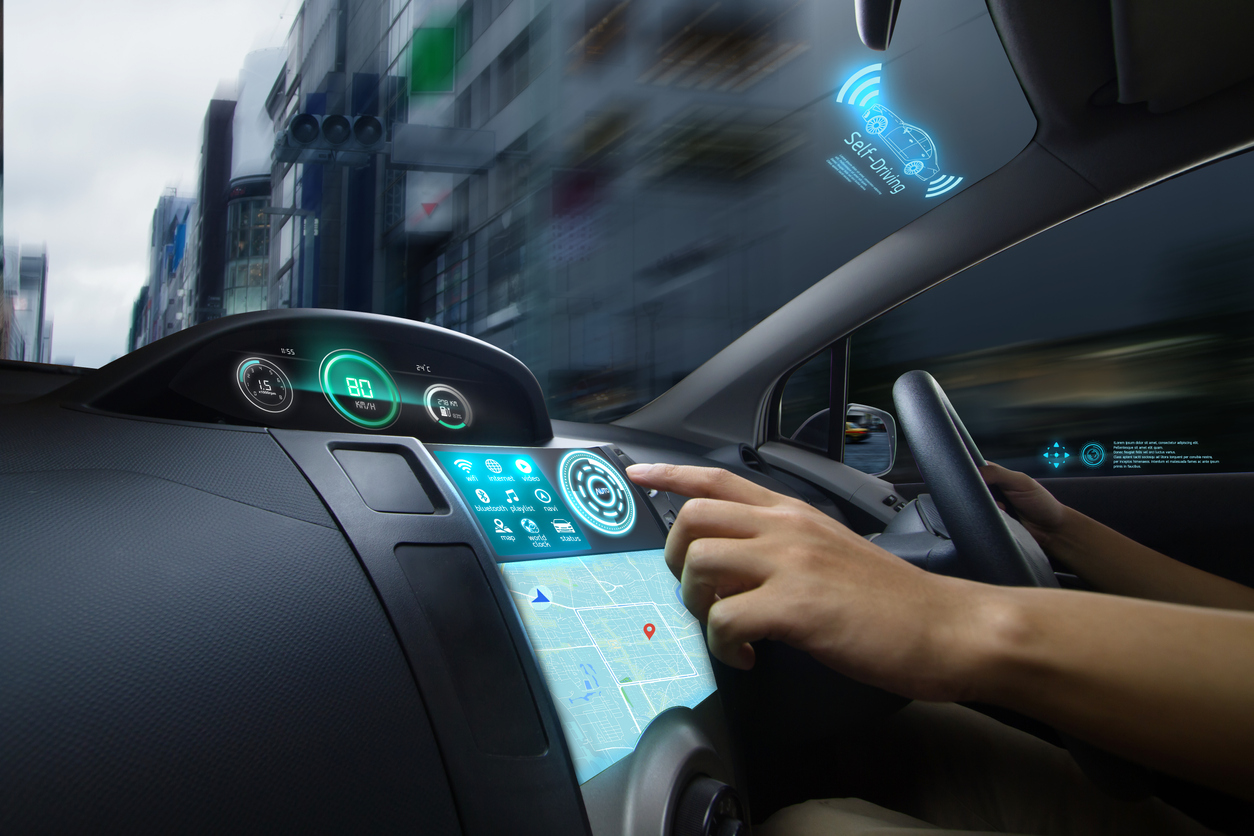Stephen Hasner | Car Accidents | September 2, 2020

Over the past decade, an average of 34,834 people died on U.S. roads in traffic accidents each year. During 2018, there were almost 1.9 million motor vehicle crashes involving injuries. Traffic accidents are a leading cause of death for people aged 1 through 54 in the United States.
In addition to human suffering, traffic accidents cost billions of dollars each year. The cost of medical care and loss of productivity from traffic accidents was more than $75 billion in 2017.
Statistics like the ones above are essential when discussing car accident claims and liabilities. However, they are also important for discussing the need for innovative car safety features and technology. New car safety features can reduce car accidents on roadways.
Vehicle safety features also reduce the risk of various types of car accident injuries. Below, we discuss some of the driver assist technology and aftermarket safety devices for cars that can help prevent people from being injured in car crashes.
Adaptive Cruise Control
Standard cruise control is best suited for highway and interstate travel. It does not work well in dense or congested traffic situations.
However, adaptive cruise control can be used in these situations. It can also help reduce the risk of a rear-end collision in any driving situation.
The system uses the vehicle’s cameras and radar to alter the cruise speed if a slower vehicle is detected. The adaptive cruise control maintains a certain distance from the vehicle in front. Some newer models have three settings, and the adaptive cruise control can stop the car entirely if the car ahead stops.
Active Park Assist and Sensors
This driver assist technology can help drivers parallel park. In some models, the system also assists with perpendicular parking.
The system uses the vehicle’s radar and sonar to measure parking spaces to find one that is large enough for the vehicle to fit. The driver operates the brakes and accelerator while the vehicle steers itself into the parking space.
A downside is that curbs, other vehicles, and environmental factors can trip up the system.
Automatic Emergency Braking
Automated emergency braking or AEB can avoid a forward collision by warning the driver using the vehicle’s radar and forward-facing cameras. The vehicle can warn of an impending collision with a pedestrian, bicyclist, vehicle, or other object.
If the driver does not take action to avoid the collision, the AEB system brakes the vehicle. However, the AEB system may fail to brake early enough or hard enough to avoid a crash. While it can be a helpful collision avoidance system in cars, drivers should not rely on the AEB to avoid a crash.
Automatic High Beams and Night Vision Features
A vehicle’s front lights are crucial to provide adequate lighting for driving at night, during poor weather conditions, and during any low-light situation. High beams provide increased visibility at night.
Automatic high beams can sense when to turn on and off the high beams. Advances in technology help the system detect when light is coming from oncoming traffic or is merely the reflection from a traffic sign or other object.
Night vision features are not yet widely available as new car safety features. They are only offered on some luxury vehicle models. The night vision feature uses thermographic cameras to detect animals, vehicles, and pedestrians that might not be visible with the naked eye.
Blind Spot Monitor Sonar Systems and Rear Cross-Traffic Alerts
Improper lane changes are the cause of many accidents. A vehicle may be in the blind spot or blocked by view by the headrest, a child’s car seat, or other objects. Blind spot and rear cross-traffic alerts use the vehicle’s cameras and sonar sensors to detect when a vehicle is in the next lane.
Some vehicles flash lights on the exterior mirrors or sound an alarm if a vehicle is detected as the car is moving over into the lane.
Motorcycles can be more difficult to see because of their small size. Blind spot monitoring and rear cross-traffic alerts can help avoid motorcycle accidents.
Rear cross-traffic alerts can help avoid crashes due to lane changes. The system also alerts the driver if a pedestrian or vehicle approaches the rear of the vehicle. It is also helpful when backing up, especially in crowded parking lots or congested areas.
Driver Attention Monitor Systems
Distracted driving and fatigued driving continues to be a common factor in causing traffic accidents. Driver attention monitoring systems are new car safety features that watch the driver instead of the road.
The system uses a visual and/or audio alarm to alert the driver that he or she might be distracted or drowsy. Driver attention monitor systems use sensors to monitor steering and the vehicle’s movements. If it appears the driver may not be paying attention or is not alert, the system sounds the alarm.
Vehicle safety features like these can help avoid car crashes and pedestrian accidents because of lane changes and distracted driving.
Forward Collision Warning
Forward collision warning is another type of driver assist or collision avoidance system in cars. It is also used in commercial trucks to help warn truck drivers of an impending collision. The system can help reduce the risk of truck accidents and car accidents by warning the driver when the vehicle is approaching an object.
When the vehicle detects an object ahead, such as slow traffic, the vehicle alerts the driver to the potential risk. The alert may include an audible and visual warning.
In some vehicles, the forward-collision warning system might also be paired with automated emergency braking to slow the vehicle if the driver does not respond to the alert.
Lane Departure Warning and Lane-Keeping Assistance
Lane departure warning helps drivers avoid drifting into another lane. If the vehicle begins to wander out of its lane or exit a lane without the turn signal being activated, the vehicle alerts the driver.
Lane-keeping assistance prevents the lane departure by steering the vehicle to keep it in the lane. Car safety features like this feature can help a driver avoid a crash because the driver fell asleep at the wheel or became distracted.
Pedestrian Detection Systems
Safety devices in modern cars use cameras to watch for pedestrians. Pedestrian accidents have increased in recent years.
These car safety features can help avoid pedestrian accidents by alerting the driver that a pedestrian is in the vehicle’s path. In some models, the vehicle may brake itself if the vehicle is about to crash into a pedestrian.
Semi-Autonomous Driving Mode and Traffic-Sign Recognition
New car safety features can include semi-autonomous driving modes. Models with semi-autonomous driving modes can steer the vehicle and center it in the intended lane. Some advanced systems can change lanes and adjust speed.
Drivers should not rely on semi-autonomous driving modes to do all the driving. In other words, the driver should remain alert and avoid distractions to reduce the risk of an accident.
Some newer model vehicles may be equipped with traffic sign recognition. The vehicle may display the sign on the gauge display, information screen, or head-up display as a reminder of a speed limit or other traffic restriction.
Aftermarket Car Safety Systems
Many modern cars are sold with driver assist technology as standard features. However, many car safety features are available as aftermarket modifications.
Aftermarket safety devices for cars that can help reduce the risk of traffic accidents include:
- Rear View Cameras
Rear view cameras can help drivers avoid collisions by displaying what is directly behind the vehicle when the car is in reverse. Backup cameras are common on a driver’s car safety features list.
Aftermarket rear view cameras can be installed in several locations. The images are displayed on a monitor or replacement review mirror.
- Lane Departure and Forward Collision Warnings
Aftermarket car safety systems that include lane departure and forward collision warnings use dash cams to monitor the road. The systems provide the driver with a warning to give the driver time to avoid a collision.
- Blind Spot Detection
A driver can mount sensors around the vehicle to alert the driver to objects that are in the vehicle’s blind spots. Generally, these aftermarket car safety systems have a range of three to ten feet. They may use visual or audio alerts.
- Replacement Head Unit Receivers
A replacement head unit that includes a video screen can be used with rear cameras to reduce the risk of accidents.
- Vehicle Security Systems
Another aftermarket addition is a vehicle security system. Even though it may not prevent an automobile accident, it can help keep the driver safe by allowing the driver to unlock the door as the driver approaches the vehicle.
Before installing aftermarket car safety features, it can be helpful to read the owner’s manual related to the installation of aftermarket systems. It can also be beneficial to talk to an automotive specialist to ensure that the system you choose is compatible with your vehicle’s make and model.
Contact Hasner Law PC to Speak with Our Atlanta Car Accident Attorneys Today
If you got injured in a car accident it’s always a good idea to reach out to a personal injury attorney for help.
For more information, please contact the Atlanta car accident law firm of Hasner Law P.C. at our nearest location to schedule a free consultation today.
We serve in Fulton County, Chatham County, and its surrounding areas:
Hasner Law PC – Atlanta Law Office
2839 Paces Ferry Rd SE #1050
Atlanta, GA 30339
(678) 888-4878
Hasner Law PC – Savannah Law Office
221 W York St
Savannah, GA 31401
(912) 234-2334


